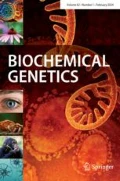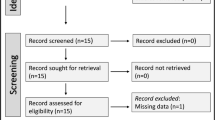Abstract
The aim of this study was to determine the paraoxonase (PON) and arylesterase (ARE) enzyme activity levels in Behcet’s disease (BD) and to investigate whether they are associated with the disease activity. Twenty-six patients (study group) with active BD and 28 healthy controls (control group) were included in this study. While the patients who had at least one of the symptoms related to genital ulcer, skin lesions, active uveitis, arthritis, thrombophlebitis, or central nervous system involvement in addition to oral ulcers were considered as the active group, the patients who did not show clinical symptoms in the last one month due to the medical treatment were considered as the inactive group in the clinical evaluation of patients with BD. The PON and ARE levels were found to be significantly lower in the study group than the control group (p < 0.05). The PON levels of the active and inactive groups were 96.23 ± 57.84 and 112.2 ± 65.14, respectively. The ARE levels of the active and inactive groups were 30.49 ± 5.81 and 30.85 ± 6.40, respectively. No significant correlations were found between clinical findings and the activity levels of PON and ARE in the active patient group (p > 0.05). The activities of the antioxidant PON and ARE enzymes are reduced in BD. Therefore, it may be useful to add antioxidant therapy to the conventional treatment of the disease.
Similar content being viewed by others
References
Bhakta BB, Brennan P, James TE, Chamberlain MA, Noble BA, Silman AJ (1999) Behcet’s disease: evaluation of a new instrument to measure clinical activity. Rheumatology 38(8):728–733
Bindal UD, Saxena R, Siddiqui MH, Sharma D (2016) Correlation of paraoxonase status with disease activity score and systemic inflammation in rheumatoid arthritic patients. J Clin Diagn Res. 10(3):BC01–BC05
Ceron JJ, Tecles F, Tvarijonaviciute A (2014) Serum paraoxonase 1 (PON1) measurement: an update. BMC Vet Res. 25(10):74
Chambers JC, Haskard DO, Kooner JS (2001) Vascular endothelial function and oxidative stress mechanisms in patients with Behcet’s syndrome. J Am Coll Cardiol 37(2):517–520
Criteria for Diagnosis of Behcet’s Disease. International Study Group for Behcet’s Disease (1990) Lancet 335(8697):1078–1080
Draganov DI, Stetson PL, Watson CE, Billecke SS, La Du BN (2000) Rabbit serum paraoxonase 3 (PON3) is a high density lipoprotein-associated lactonase and protects low density lipoprotein against oxidation. J Biol Chem 275(43):33435–33442
Durrington PN, Mackness B, Mackness MI (2001) Paraoxonase and atherosclerosis. Arterioscler Thromb Vasc Biol 21(4):473–480
Erdem FH, Karatay S, Yildirim K, Kiziltunc A (2010) Evaluation of serum paraoxonase and arylesterase activities in ankylosing spondylitis patients. Clinics 65(2):175–179
Eren E, Abuhandan M, Solmaz A, Taşkın A (2014) Serum paraoxonase/arylesterase activity and oxidative stress status in children with metabolicsyndrome. J Clin Res Pediatr Endocrinol. 6(3):163–168
Gürsu MF, Özdin M (2002) Sigara içenlerde serum paraoksonaz (PON1) aktiviteleri ile malondialdehit düzeylerinin araştırılması. Fırat Tıp Dergisi 7(2):732–737
Isik A, Koca SS, Ustundag B, Selek S (2007) Decreased total antioxidant response and increased oxidative stress in Behcet’s disease. Tohoku J Exp Med 212(2):133–141
Karakucuk S, Baskol G, Oner AO, Baskol M, Mirza E, Ustdal M (2004) Serum paraoxonase activity is decreased in the active stage of Behcet’s disease. Br J Ophthalmol 88(10):1256–1258
Kokcam I, Naziroglu M (2002) Effects of vitamin E supplementation on blood antioxidants levels in patients with Behcet’s disease. Clin Biochem 35(8):633–639
Kosan C, Cayir A, Turan MI, Ustebay S (2013) Paraoxonase 1 and arylesterase levels in children with familial Mediterranean fever. Eur Rev Med Pharmacol Sci 17(3):375–378
Kose K, Yazici C, Cambay N, Ascioglu O, Dogan P (2002) Lipid peroxidation and erythrocyte antioxidant enzymes in patients with Behcet’s disease. Tohoku J Exp Med 197(1):9–16
Mochizuki H, Scherer SW, Xi T, Nickle DC, Majer M, Huizenga JJ, Tsui LC, Prochazka M (1998) Human PON2 gene at 7q21.3: cloning, multiple mRNA forms, and missense polymorphisms in the coding sequence. Gene 213(1–2):149–157
Nair JR, Moots RJ (2017) Behcet’s disease. Clin Med (Lond). 17(1):71–77. doi:10.7861/clinmedicine.17-1-71
Ng CJ et al (2001) Paraoxonase-2 is a ubiquitously expressed protein with antioxidant properties and is capable of preventing cell-mediated oxidative modification of low density lipoprotein. J Biol Chem 276(48):44444–44449
Olama SM, Elarman MM (2013) Evaluation of paraoxonase and arylesterase activities in Egyptian patients with ankylosing spondylitis. Rheumatol Int 33(6):1487–1494
Onder M, Gurer MA (2001) The multiple faces of Behcet’s disease and its aetiological factors. J Eur Acad Dermatol Venereol 15(2):126–136
Orem A, Yandi YE, Vanizor B, Cimsit G, Uydu HA, Malkoc M (2002) The evaluation of autoantibodies against oxidatively modified low-density lipoprotein (LDL), susceptibility of LDL to oxidation, serum lipids and lipid hydroperoxide levels, total antioxidant status, antioxidant enzyme activities, and endothelial dysfunction in patients with Behcet’s disease. Clin Biochem 35(3):217–224
Özdin M, Gürsu MF (2003) Koroner kalp hastaları ile çeşitli risk faktörlerini taşıyan bireylerde paraoksonaz 1 ve arilesteraz aktiviteleri ile fenotiplerinin araştırılması Uzmanlık Tezi. Fırat University
Reddy ST et al (2001) Human paraoxonase-3 is an HDL-associated enzyme with biological activity similar to paraoxonase-1 protein but is not regulated by oxidized lipids. Arterioscler Thromb Vasc Biol 21(4):542–547
Saglam K, Serce AF, Yilmaz MI, Bulucu F, Aydin A, Akay C, Sayal A (2002) Trace elements and antioxidant enzymes in Behcet’s disease. Rheumatol Int 22(3):93–96
Sandikci R et al (2003) Lipid peroxidation and antioxidant defence system in patients with active or inactive Behcet’s disease. Acta Derm Venereol 83(5):342–346
She ZG, Chen HZ, Yan Y, Li H, Liu DP (2012) The human paraoxonase gene cluster as a target in the treatment of atherosclerosis. Antioxid Redox Signal 16(6):597–632
Therond P, Bonnefont-Rousselot D, Davit-Spraul A, Conti M, Legrand A (2000) Biomarkers of oxidative stress: an analytical approach. Curr Opin Clin Nutr Metab Care 3(5):373–384
Türsen U (2012) Pathophysiology of the Behçet’s disease. Patholog Res Int 2012:493015
Watts RA, Conaghan P, Denton C, Foster H, Isaacs JD, Muller-Ladner U (2013) Oxford textbook of rheumatology, 4th edn. Oxford University Press, Oxford, pp 1079–1162
Yapislar H, Aydogan S, Borlu M, Ascioglu O (2007) Decreased nitric oxide and increased platelet aggregation levels in patients with Behcet’s disease. Thromb Res 119(4):461–465
Yazici C, Kose K, Calis M, Demir M, Kirnap M, Ates F (2004) Increased advanced oxidation protein products in Behcet’s disease: a new activity marker? Br J Dermatol 151(1):105–111
Young IS, Woodside JV (2001) Antioxidants in health and disease. J Clin Pathol 54(3):176–186
Author information
Authors and Affiliations
Corresponding author
Rights and permissions
About this article
Cite this article
Kul, A., Uzkeser, H. & Ozturk, N. Paraoxonase and Arylesterase Levels in Behcet’s Disease and Their Relations with the Disease Activity. Biochem Genet 55, 335–344 (2017). https://doi.org/10.1007/s10528-017-9800-2
Received:
Accepted:
Published:
Issue Date:
DOI: https://doi.org/10.1007/s10528-017-9800-2



